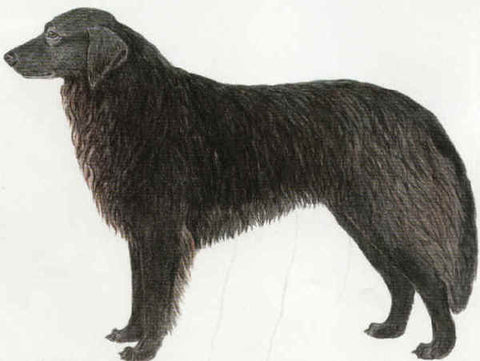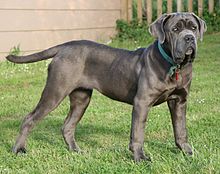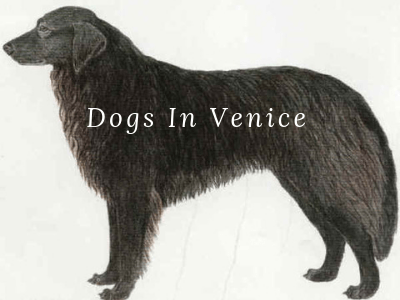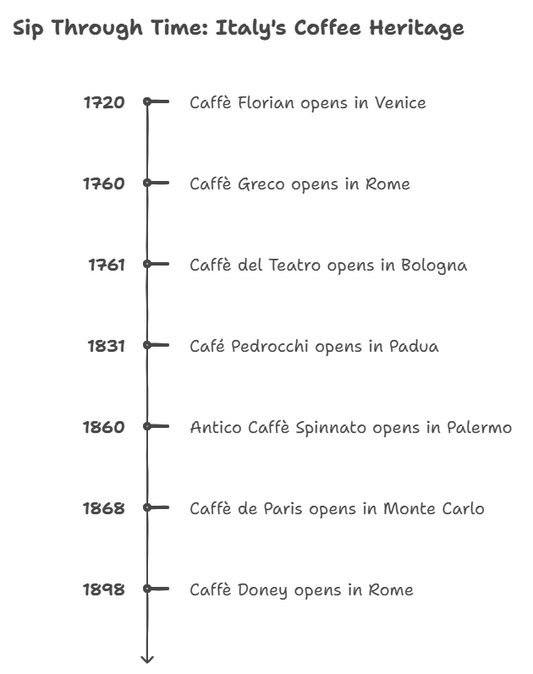Drifting through the winding streets of Venice, Italy, slowing down and getting lost, you see domesticated dogs running off-leash. With no cars or other vehicles in the city, the animals run free through the streets, canals, alleys, and bridges. Dogs have a long, honored history in Venice. Venice honors Saint Roch and the dog that saved his life by bringing him bread and licking his wounds. Statues and artwork depicting Saint Roch and the dog can be found throughout Venice. At the Guggenheim Museum there, Peggy Guggenheim is buried beside her 14 dogs.
The liberated, off-leash Venetian dogs are surprisingly friendly and nonchalant. Different dogs that can be found in Venice including:
- Sicilian Shepherd

Source: LifestockOfTheWorld
The Cane di Mannara (Mannara Dog or Sicilian Shepherd), is a pastoral dog used by shepherds in Sicily and homeowners as a guard dog. Unlike the other breeds mentioned in this article, the Sicilian Shepherd faces extinction and there were only 90 Sicilian Shepherds known to exist in 2012. However, in 2010, the Associazione Samannara (Samannara Association) was set up in an effort to save the breed. Part of that effort includes formal recognition of the breed and its characteristics so that a studbook can be set up to preserve the breed. The association has made some progress and in January 2013, a provisional standard was established. The Veterinary Sciences department at the University of Messina is collaborating in the project.
- Neapolitan Mastiff

Source: Wikipedia
The Mastino Napoletano (Neapolitan Mastiff), or Italian Mastiff, is thought to be descended from dogs used by the Ancient Romans during their campaigns across Europe. A large, muscular dog with a large head, powerful jaw, short strong legs weighing as much as 200 pounds and measuring 30 inches high, the Romans used Neapolitan Mastiffs as guard dogs. The Romans also trained Neapolitan Mastiffs as gladiator dogs to fight in wars, and in amphitheaters to bait bears, bulls and even jaguars. The breed faced extinction after World War II but was saved when Italian painter Piero Scanziani set up a breeding kennel in Rome in 1949. Lovers of the Neapolitan Mastiff often refer to the breed simply as ‘Neo’. The life expectancy of a Neapolitan Mastiff is seven to nine years. They are short-haired and black, brown or grey in color.
- Volpino Italiano

Source: Wikipedia
Volpino Italiano means ‘little Italian fox’. It is a spitz breed with long, thick fur, a curly tail, and small, pointed ears. The breed dates back thousands of years, and was loved by aristocrats and peasants alike – it is even thought that Italian artist Michelangelo had a Volpino. In 1965, only five Volpino were known to exist but a project was founded to save the Volpino breed using animals used as guard dogs on farms. There are thought to be a few thousand Volpino alive today. The Volpino is usually white, black, champagne or red in color. It weighs up to 12 pounds and has an average height of 11 inches. Although the Volpino is small, it is often used as a guard dog. A Volpino has an average life expectancy of 15 years.
- Cirneco of Etna
The Cirneco dell’Etna (Cirneco of Etna) is a small, slender breed of hunting dog that looks similar to a greyhound. The breed is originally from Sicily, where it was bred to endure the harsh terrain of Mount Etna and used to hunt wild rabbits. It is one of the smallest breeds of hunting dogs measuring up to 20 inches high and weighing up to 26 pounds. It has a shorthaired coat that is light to dark tan in color, sometimes with white markings, and it is well known for its independent temperament.
- Italian Pointer
The Bracco Italiano (Italian Pointer) has ancient roots in Italy and is mentioned in writings of the 4th and 5th centuries. It was bred as a hunting dog, first to drive birds into nets and then as a gundog. Images of the Bracco appear in 14th-century frescoes and engravings, and the dog was bred by the illustrious Medici and Gonzaga families during the Renaissance when hunting birds was a sport favored by the Italian aristocracy. The dogs were so highly prized that records show that a chestnut Bracco was given as a gift to the French Royal Court in 1527. The Bracco is thought to have developed from a cross between the white and orange Piedmontese Pointer, and the white and chestnut Lombard pointer. The Bracco faced extinction in the late 19th century but was saved thanks to the efforts of Italian breeder Ferdinand Delour de Ferrabouc. Braccos look like Bloodhounds with solemn faces and long, droopy ears. They are mottled in appearance with colored patches, often white and orange, or white and brown, but also with chestnut and amber markings.
- Maremma Scenthound
The Segugio Maremmano (Maremma Scenthound) comes from the coastal plains of Maremma in Tuscany, where it is used to hunt wild boar. The Segugio Maremmano stands up to 21 inches at the withers and weighs up to 51 pounds. It can have a smooth or rough coat in brown, black and tan, or striped with white markings.
- Italian Spinone
The Spinone Italiano (Italian Spinone) is one of the oldest breeds of gun dogs. The provenance of the breed is uncertain but some think it was brought to Italy by traders from Greece and the western Adriatic coast during Ancient Roman times. The Spinone is believed to be named after an Italian thorn bush, the spino, which was a hiding place for small game seeking shelter from larger predators. The wiry-haired Spinone was able to penetrate the prickly bush and is known for being able to hunt in dense cover, and both retrieve from and track on water. After World War II, the breed faced extinction but was saved thanks to the efforts of Italian enthusiasts. Spinone are large dogs that can weigh up to 86 pounds and reach up to 28 inches in height. They are strong with a wiry coat, rough beard and large nose. Their coats are usually white, white with orange or chestnut markings, brown roan with brown patches, or orange roan with orange patches. The average life expectancy of a Spinone is nine years.
All these dogs can be found in Venice, owned by different people from different parts of Italy. They all love the streets of Venice and move about a lot which their owners here.
The sheer beauty of Venice
Although it may seem a little crowdy and expensive regarding accommodation, Venice is still an irresistible place to visit in Italy. And if you are really willing to enjoy the railways and canals your dog will make the best travel partner for you.
There are 5 pretty villages of the hiking trails that connect them which are becoming increasingly popular day by day. And this popularity becomes so much that the maintenance committee is planning to give the decision that they are going to limit the number of allowed visitors. While having a tremendously great time with your dog, you can spice it up even more. By taking a quick work through the shoreline just beside these villages.




